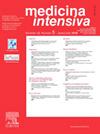心源性休克的血流动力学监测和超声心动图评估
IF 2.7
4区 医学
Q2 CRITICAL CARE MEDICINE
引用次数: 0
摘要
心源性休克(CS)的特点是继发于心室功能障碍的组织低灌注状态。通过血流动力学监测,我们可以获得有关心血管病理生理学的信息,这将有助于我们在 CS 情况下做出诊断和指导治疗。CS 中最常用的监测系统是肺动脉导管,因为它能提供 CS 中的关键血液动力学变量,如心输出量、肺动脉压力和肺动脉闭塞压力。另一方面,超声心动图可在床边获得解剖和血液动力学数据,对通过连续监测设备获得的信息进行补充。CS 监测可被视为多模式综合监测,包括血液动力学、新陈代谢和超声心动图参数,这些参数可描述 CS 的特征,并在血液动力学复苏期间指导治疗干预。本文章由计算机程序翻译,如有差异,请以英文原文为准。
Monitorización hemodinámica y evaluación ecocardiográfica en el shock cardiogénico
Cardiogenic shock (CS) is characterized by the presence of a state of tissue hypoperfusion secondary to ventricular dysfunction. Hemodynamic monitoring allows us to obtain information about cardiovascular pathophysiology that will help us make the diagnosis and guide therapy in CS situations. The most used monitoring system in CS is the pulmonary artery catheter since it provides key hemodynamic variables in CS, such as cardiac output, pulmonary artery pressure, and pulmonary artery occlusion pressure. On the other hand, echocardiography makes it possible to obtain, at the bedside, anatomical and hemodynamic data that complement the information obtained through continuous monitoring devices.
CS monitoring can be considered multimodal and integrative by including hemodynamic, metabolic, and echocardiographic parameters that allow describing the characteristics of CS and guiding therapeutic interventions during hemodynamic resuscitation.
求助全文
通过发布文献求助,成功后即可免费获取论文全文。
去求助
来源期刊

Medicina Intensiva
CRITICAL CARE MEDICINE-
CiteScore
2.70
自引率
20.00%
发文量
146
审稿时长
33 days
期刊介绍:
Medicina Intensiva is the journal of the Spanish Society of Intensive Care Medicine and Coronary Units (SEMICYUC) and of Pan American and Iberian Federation of Societies of Intensive and Critical Care Medicine. Medicina Intensiva has become the reference publication in Spanish in its field. The journal mainly publishes Original Articles, Reviews, Clinical Notes, Consensus Documents, Images, and other information relevant to the specialty. All works go through a rigorous selection process. The journal accepts submissions of articles in English and in Spanish languages. The journal follows the publication requirements of the International Committee of Medical Journal Editors (ICMJE) and the Committee on Publication Ethics (COPE).
 求助内容:
求助内容: 应助结果提醒方式:
应助结果提醒方式:


